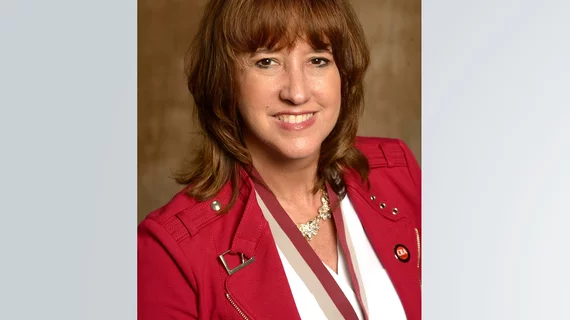AHRA 2018: How imaging professionals can find success with the 10 tenets of servant leadership
Jacqui Rose, MBA, CRA, began her presentation at the AHRA 2018 Annual Meeting in Orlando by going over some of the changes today’s imaging leaders face on a daily basis. It’s a long list, of course—one that includes payment reforms, technological breakthroughs, regulatory updates, policy shifts and much more.
“With all of these changes, how can we be a good leader?” Rose asked the audience. “What’s a good way to get where we need to be?”
Rose, the imaging director at Upper Valley Medical Center in Troy, Ohio, and a member of the AHRA Board of Directors, then discussed why she embraced the philosophy of servant leadership and why other leaders in the specialty should consider it as well.
“Servant leadership helps you achieve every goal you want to achieve and provides a culture where your team can achieve their personal and professional goals,” Rose said. “But you must serve. There’s no room in servant leadership for ego or hubris. You take none of the accolades from your team’s successes but you take all of the blame. So you must be willing to serve if you want to be a servant leader.”
Through trust and compassion, she added, servant leaders earn the right to lead their team each and every day. And someone who practices servant leadership creates “opportunities for their teammates to elevate and achieve.”
The 10 tenets of servant leadership, Rose explained are as follows:
- Listening
- Empathy
- Healing
- Awareness
- Persuasion
- Conceptualization
- Cultivating foresight
- Stewardship
- Commitment to the growth of people
- Building community
Each of these is vital to finding success through servant leadership, she said. Empathy, for instance, means leaders have an open mind at all times.
“Sometimes we make a judgement on the person in front of us and then withhold our empathy depending on whether they are worth or not,” Rose said. “We’ve often heard the stories of drug seekers in the emergency department. I contend that our drug seekers deserve the same respect, compassion and empathy that the president of our organization deserves. We have to make sure we turn that bias off and we’re not passing that judgement.”
She also explained the importance of conceptualization, or challenging the way things have always been done and thinking outside the box.
“We have to empower our team and enable them to achieve more by challenging the status quo, even if it means there is potential for failure,” Rose said. “As long as they are not affecting a human life, we need to give them that opportunity and that ability to be creative.”
When your employees all truly believe in what the team is doing—as opposed to just turning off their brains and going with the flow—they will put forth more effort, feel more accountable and be much more likely to come up with creative solutions when problems arise.
Rose also touched on a topic that gets a lot of attention in radiology leadership: the differences between specialists from different generations. Instead of saying, for example, “This person is a millennial, so they will do this,” or, “This person is from an older generation, so they will want to do this,” Rose said generational differences are eliminated through servant leadership. Someone practicing servant leadership can connect individuals instead of relying on generalizations.
“Why are you trying to fit people into a stereotype?” she asked. “That’s not the right thing to do … it’s the wrong direction to go.”
In case any attendees were still skeptical about the power of servant leadership, Rose concluded by showing that, yes, the proof is in the pudding. At Upper Valley Medical Center, servant leadership has led to a number of positive outcomes, including more engaged employees, more satisfied patients, reduced turnover, improved productivity and increased volume.

